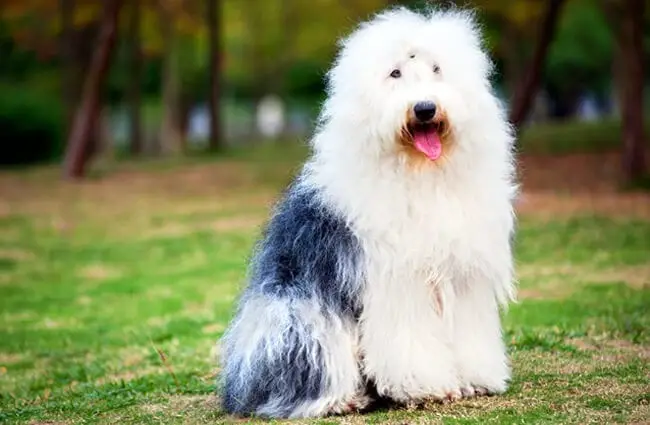A Comprehensive Guide to the Old English Sheepdog
The Old English Sheepdog, affectionately known as the “Bobtail,” is a striking and charismatic breed with a rich history and a personality to match its impressive appearance. Renowned for its fluffy coat and gentle demeanor, this breed has captured the hearts of dog lovers for centuries. This guide delves into every facet of the Old English Sheepdog, from its origins to its care, offering insights for both prospective owners and breed enthusiasts.

A Breed Rooted in History
The Old English Sheepdog developed in the rural counties of England during the 18th and 19th centuries. It was originally bred as a drover and herding dog, used to guide livestock—cattle and sheep—across long distances. Its distinctive rolling gait allowed the dog to keep pace with the herd while staying clear of the animals. A thick, water‑resistant coat protected the dog from the damp British climate. Tail docking, which earned the breed the nickname “Bobtail,” was historically performed to prevent injury and to help the dog maintain balance while working; it is now largely prohibited in many countries.
Physical Characteristics: Size and Appearance
Old English Sheepdogs are large, powerful dogs. Males typically stand 22 inches or more at the shoulder and weigh between 60 and 100 pounds. Females are slightly smaller, reaching about 21 inches in height and weighing 50 to 85 pounds. Their most recognizable feature is their profuse, shaggy coat, which is dense and water‑resistant. The coat comes in shades of grey, grizzle, blue, or white. A common misconception is that these dogs shed minimally. Quite the contrary—shedding is significant, so regular grooming is essential to prevent matting and tangles. Beneath the fluff lies a muscular, athletic build that reflects their working heritage.

Temperament and Behavior
Old English Sheepdogs are known for their playful, intelligent, and adaptable personalities. They are generally good‑natured and affectionate with their families, making them wonderful companions. While they can be somewhat reserved with strangers, they are not typically aggressive. These dogs are also known for their quirky sense of humor and can often be found engaging in amusing antics. Early socialization is crucial to ensure they develop into well‑adjusted adults. Given their herding background, they may exhibit a tendency to “herd” children or other pets; this can be managed with consistent training. They need mental stimulation and can become destructive if bored. Expect a vocal dog; they are not known for being quiet.
Caring for Your Old English Sheepdog
Owning an Old English Sheepdog is a commitment that requires time, effort, and resources. Here’s a breakdown of essential care requirements:
- Grooming: This is perhaps the most demanding aspect of ownership. Regular brushing several times a week prevents matting, and professional grooming every few months is recommended.
- Exercise: These active dogs require at least an hour of exercise daily. Walks, runs, playtime in a securely fenced yard, or participation in dog sports suit them well.
- Training: Early and consistent training is vital to establish good manners and address any potential behavioral issues. Positive reinforcement methods work best with this intelligent and sensitive breed.
- Diet: A high‑quality dog food formulated for large breeds supports their growth and maintains overall health.
- Health: Old English Sheepdogs can be prone to hip dysplasia, progressive retinal atrophy, and gastric dilation‑volvulus. Regular veterinary check‑ups are crucial for early detection and treatment.

Suitability and Living Environment
Old English Sheepdogs are best suited to families who have the time, energy, and space to meet their needs. They thrive in homes with large, securely fenced yards where they can run and play. While they can adapt to apartment living, it is not ideal due to their size and energy levels. They are generally good with children and other pets, but early socialization is essential. Their protective instincts can make them wary of strangers, so early exposure to different people and environments is important. They are not a low‑maintenance breed and require consistent attention and care.
Beyond the Basics: Breed‑Specific Considerations
For those truly interested in the breed, a deeper understanding of some unique traits is valuable. The Old English Sheepdog’s coat does not shed in distinct seasons; it continuously grows and requires regular maintenance. Historically, the breed was used not only for herding but also as a drover dog that guided cattle to market. This instilled a natural drive to move things, which can manifest as playful nipping at heels if not properly channeled through training. They are also surprisingly agile for their size, excelling in activities like flyball and agility.

Interesting Facts & Trivia
- The Old English Sheepdog is the mascot of Dulux paint, appearing in their advertising campaigns since 1961.
- These dogs were frequently used in the movie “The Shaggy Dog” due to their distinctive appearance and playful personalities.
- Despite their fluffy appearance, they are surprisingly good swimmers.
- The breed almost became extinct after World War II because of a decline in farming and a lack of resources.

Conclusion
The Old English Sheepdog is a truly remarkable breed, rich in history, personality, and charm. While they require a significant commitment of time, effort, and resources, the rewards of owning one of these gentle giants are immeasurable. If you’re seeking a loyal, playful, and intelligent companion, and you’re prepared to meet their unique needs, the Old English Sheepdog may be the perfect breed for you. Understanding their history, temperament, and care requirements is crucial to ensuring a happy and fulfilling life together.






![Red Angus Closeup of a beautiful Red Angus cowPhoto by: U.S. Department of Agriculture [pubic domain]https://creativecommons.org/licenses/by/2.0/](https://animals.net/wp-content/uploads/2020/03/Red-Angus-4-100x75.jpg)

